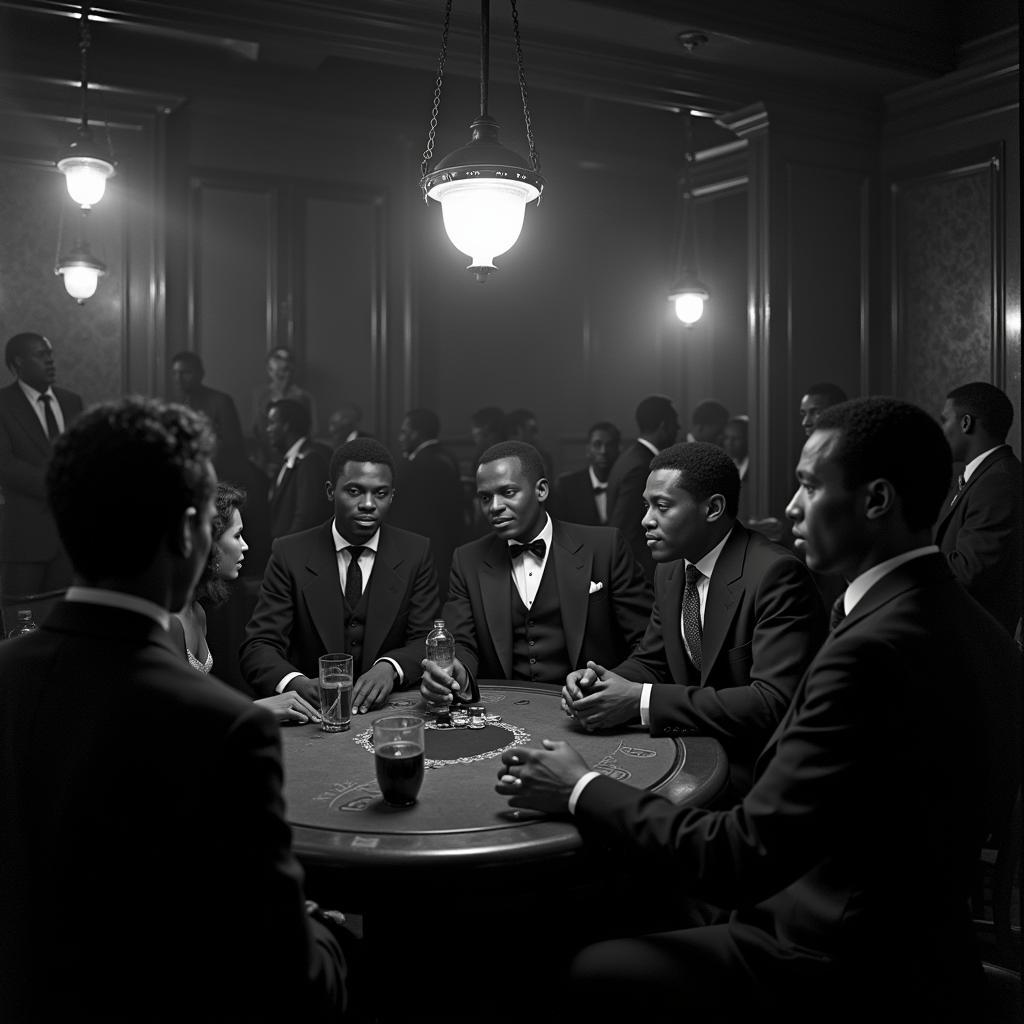African American Crime Bosses: Fact, Fiction, and the Complexities of Power
African American Crime Bosses have often been portrayed in media as figures of power and intrigue, shrouded in both notoriety and a degree of romanticization. This article delves into the historical context, examining the socio-economic factors that led to the rise of some African Americans in organized crime, while also challenging the often-simplified narratives surrounding them. We explore the complexities of their roles, separating fact from fiction and examining the impact they had on their communities.
The Socio-Economic Landscape and the Rise of “Black Hand” Figures
The early 20th century saw the Great Migration, a massive movement of African Americans from the rural South to urban centers in the North, seeking better economic opportunities and escaping the pervasive Jim Crow laws. However, these new environments often presented different forms of discrimination, limiting access to legitimate employment and social mobility. This created a fertile ground for the emergence of alternative economies, including illegal activities like gambling, bootlegging, and the numbers racket. In these circumstances, some African Americans, facing systemic barriers, rose to positions of power within these underground networks. These figures were sometimes referred to as “Black Hand” figures, evoking comparisons with Italian-American Mafia organizations.
Challenging the Stereotypes of African American Crime Bosses
While the media often portrays a monolithic image of the African American crime boss, the reality was far more nuanced. Their motives, operations, and impact on their communities varied considerably. Some were ruthless exploiters, profiting from the vulnerabilities of their own people. Others, however, provided essential services and resources within communities neglected by mainstream institutions, blurring the lines between criminal enterprise and social provision. It is crucial to avoid generalizations and understand the specific contexts in which these individuals operated.
 African American Crime Bosses during Prohibition
African American Crime Bosses during Prohibition
Bumpy Johnson: A Case Study in Complexity
One of the most well-known African American figures associated with organized crime is Ellsworth “Bumpy” Johnson. Operating in Harlem during the mid-20th century, Johnson’s story exemplifies the complex interplay of crime, community, and social circumstance. While undoubtedly involved in illegal activities, Johnson also invested in local businesses, provided scholarships for underprivileged youth, and championed civil rights. His story challenges simplistic narratives, forcing us to confront the difficult questions about power, morality, and the role of individuals within marginalized communities.
The Legacy and Impact on Communities
The legacy of African American crime bosses is a subject of ongoing debate. While their criminal activities cannot be condoned, it’s essential to acknowledge the broader societal forces that shaped their rise. Their stories offer a glimpse into the struggles faced by African Americans seeking economic empowerment in the face of systemic discrimination. Understanding this historical context is crucial for addressing the root causes of inequality and building more equitable societies.
 Bumpy Johnson in Harlem
Bumpy Johnson in Harlem
Beyond the Headlines: Researching the Untold Stories
Moving beyond sensationalized portrayals, academic research and historical scholarship are crucial for uncovering the more nuanced realities of African American involvement in organized crime. Examining primary sources, oral histories, and archival materials allows us to gain a deeper understanding of the complexities, motivations, and consequences of their actions, as well as their impact on the social fabric of their communities.
The Role of Media Representation
The way African American crime bosses are depicted in media and popular culture has significantly shaped public perception. From blaxploitation films to contemporary television series, these portrayals often perpetuate stereotypes and reinforce harmful narratives. Critical analysis of these representations is vital for challenging ingrained biases and promoting a more informed understanding of this complex historical phenomenon.
In conclusion, the topic of African American crime bosses demands a nuanced and critical approach. Moving beyond simplistic stereotypes, we must consider the historical, social, and economic factors that contributed to their rise. By examining their stories in context, we can gain a deeper understanding of the complexities of power, inequality, and the ongoing struggle for social justice.
FAQ
- What were some of the primary economic activities of African American crime bosses during the Prohibition era?
- How did the Great Migration contribute to the rise of organized crime in African American communities?
- What are some of the ethical considerations when researching and discussing this topic?
- What role did media representation play in shaping public perception of African American crime bosses?
- How can we move beyond stereotypes and develop a more nuanced understanding of this historical phenomenon?
- What are some reliable resources for further research on this topic?
- How does the story of Bumpy Johnson challenge conventional narratives about African American crime bosses?
Need support? Contact us 24/7: Phone: +255768904061, Email: kaka.mag@gmail.com, Address: Mbarali DC Mawindi, Kangaga, Tanzania.
